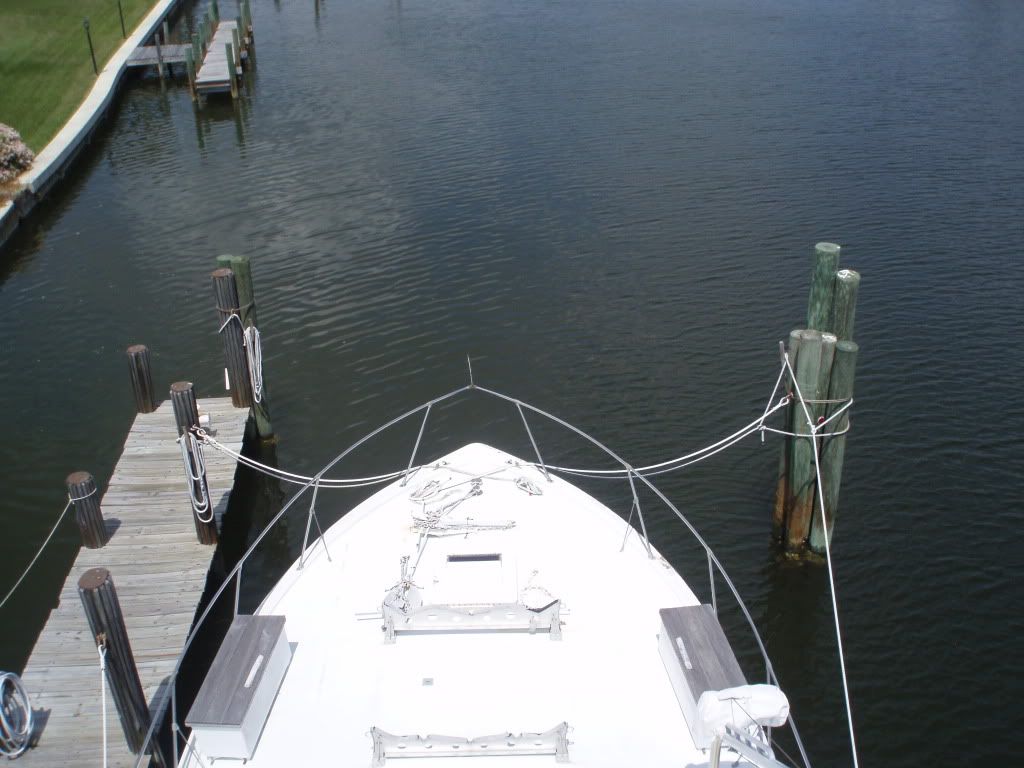MikeP
Legendary Member
- Joined
- Apr 12, 2005
- Messages
- 8,674
- Status
- OTHER
- Hatteras Model
- Not Currently A Hatteras Owner
In all the line arranging/re-arranging re irene I got to wondering...why do we cross lines?
IOW, if a boat has two cleats on the side the forward cleat is usually attached to a spring line some distance behind it on the dock; the aft cleat is attached to the dock some distance in front so that the lines cross. Is this any stronger/more secure than not crossing them? I can't figure out why there is any difference. We do the same with stern lines - cross them. Why?
I realize that making the lines longer helps with stretch and the ability for the boat to ride up/down with the tide and not require any adjustments. And depending on the dock/piers, there may not be a way to get a decent run without crossing the lines. But if a decent run is possible without crossing the lines, does crossing provide any other advantage?
IOW, if a boat has two cleats on the side the forward cleat is usually attached to a spring line some distance behind it on the dock; the aft cleat is attached to the dock some distance in front so that the lines cross. Is this any stronger/more secure than not crossing them? I can't figure out why there is any difference. We do the same with stern lines - cross them. Why?
I realize that making the lines longer helps with stretch and the ability for the boat to ride up/down with the tide and not require any adjustments. And depending on the dock/piers, there may not be a way to get a decent run without crossing the lines. But if a decent run is possible without crossing the lines, does crossing provide any other advantage?



